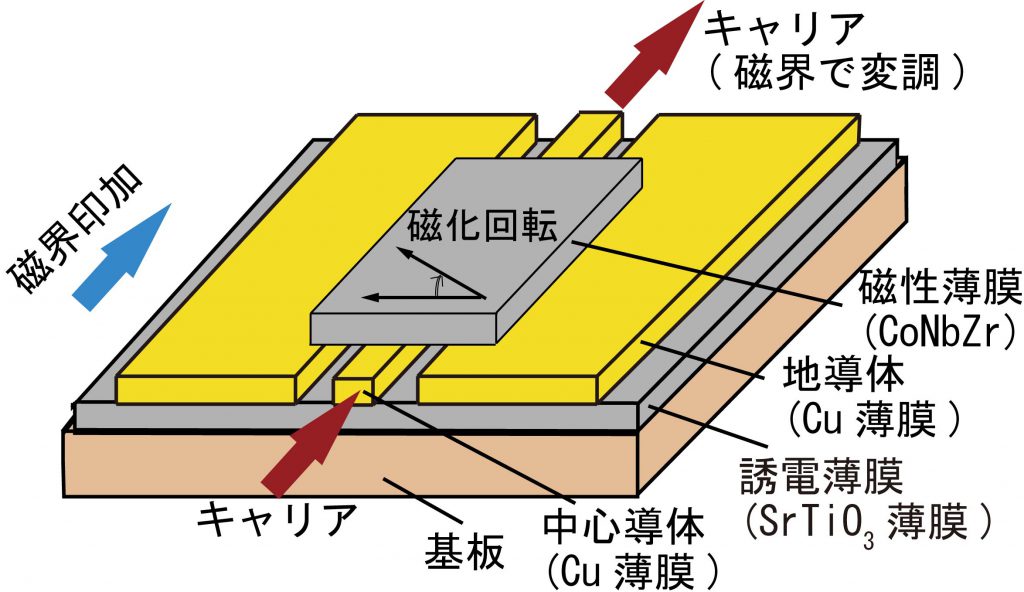心臓から発生する微弱磁界(心磁界)は地磁気の約100万分の1以下のとても微弱なものです(図1)。 従来このような身体から出てくる磁界は一台数億円もする超伝導量子干渉素子(SQUID)で測定されていました。
当研究室では世界で最も高感度な室温動作の薄膜センサ(図2)を開発しました。 図3は測定された心磁界の信号波形です。 将来、この磁界センサを使って、心臓のどの位置に病気があるかわかるようになると考えられます。 またこのセンサは安価なため一般の病院等へも普及することが期待されます。


このセンサは磁性薄膜(数ミクロンの薄さの磁性体)に微弱な磁界が印加されると、磁性体内部の磁化(小さな方位磁針)が回転し、大きなインピーダンス変化が得られることを原理とします。 このセンサで、薮上研究室は世界最高水準の磁界検出分解能(7×10-13 テスラ)を達成しました。

磁気シールドなしで心磁界に特有のQRS波が心電波形と同期して測定されています。左心室近く (上図の右側)ではR波が支配的で、中央付近ではS波が強く観測されることから心磁界が正確に測定できたと考えられます。

